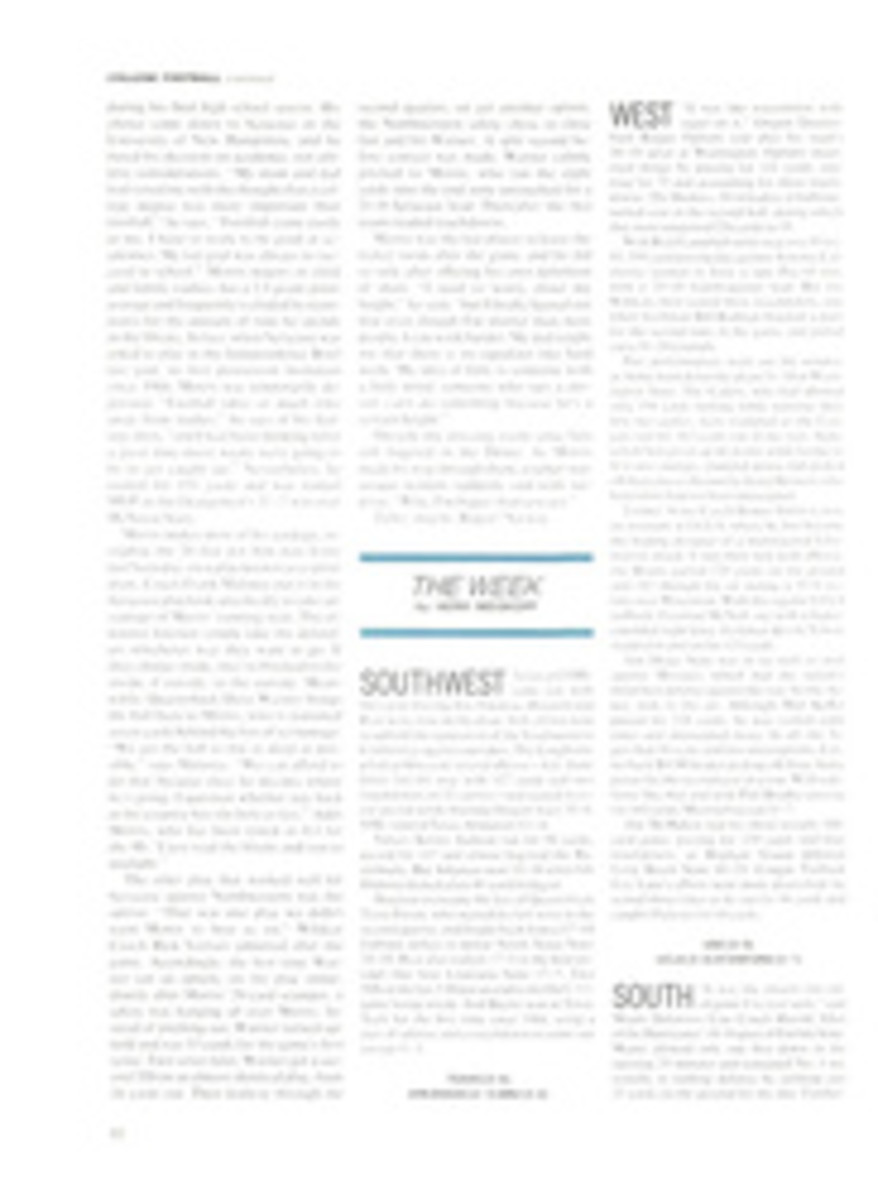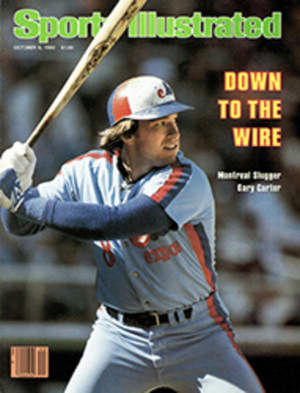
WANT TO BAG MONEY? GET OUT YOUR OLD GOLF CLUBS, THEY MAY BE GOLDEN
If you are a golfer, you may have a lot of money lying around in your garage or attic. Golf equipment is no different from furniture, rare wine and Chinese porcelain: old is often better then new—and a lot more valuable. Many clubs produced as recently as the 1950s and '60s are considered "classics." Some are worth $1,000 a set, and the right kind of sand wedge can bring $500 or more all by itself.
Trading in such clubs is a hot new game, and if you want to hit it big, now is the time to take a look at any clubs you may have stashed away. Some of them—especially if they're of a certain model made by MacGregor—have turned out to be excellent hedges against inflation.
For instance, in 1949 MacGregor issued a line of Tommy Armour woods and irons that sold for $156. Today the four woods go for as much as $1,000, and the irons can fetch $500. The classic-club dealers springing up across the country point out that the old woods were made of high-quality persimmon, which is no longer available in abundance. As for the irons, a revolution took place in the golf-club business in the early '70s, when many club manufacturers had switched from forged to cast-iron heads. Forged clubs had to be finished by craftsmen who ground the irons to minute specifications, while cast clubs are stamped out of a mold and need only minor touching up. The result was that the men who finished such clubs were put out of work, and their craftsmanship has been lost.
The market for classic clubs exists partly for the same reason that a vintage Rolls-Royce is worth more than a new model—some people just love carefully made old things. "But there's a difference," says Mike Doherty, a classic-club dealer in Los Angeles. "The old Rolls probably will not perform as well as the new one. But these classic clubs perform better than new ones. I bet that 75% of the players on the pro tour are using old persimmon-wood drivers, and that of those, most are using MacGregor models."
Doherty says the classic-club market boomed in about 1975, and now his phone begins ringing at 6 a.m. and often continues until 11 p.m. He even puts out a price and identification guide that sells for a hefty $19.95.
Perhaps the single most sought-after club model is the Wilson R-90 sand wedge manufactured between 1937 and 1942. Tour players hunger for it—they are taken with its bounce and large size—which is why some of the wedges are worth $500. But clubs don't have to be nearly half a century old to be valuable. In 1966 and '67 MacGregor put out a line of Jack Nicklaus VIP irons. Those clubs, which originally went for $225 a set, now sell for up to $1,000. Early next year MacGregor will issue 1.000 replicas of the set of 11 irons that Nicklaus used in winning this year's U.S. Open and PGA. Each set will be numbered and carry a $1,000 price tag, qualifying them as instant classics, one presumes.
From 1960 until 1972, Leon Nelson headed MacGregor's advisory staff. Over the years he signed such players as Nicklaus, Jackie Burke, Ken Venturi and Tom Watson to endorsement contracts and also saw to it that their clubs were made to exact specifications.
Thus Nelson is uniquely qualified to comment on the surge in interest in classic clubs. He thinks a lot of collectors are paying big money for clubs that aren't very special. "Cast clubs changed the whole business," he says, "because they were made in a mold and there was a uniformity that cannot be duplicated by individual grinding. In the old days you might have 200 two-irons in a lot that one guy had ground. Then another guy would do a batch of 200 three-irons. He'd grind entirely differently, and yet his three-irons would go out in the same sets with the other guy's twos. But our custom clubs, the ones we made for our advisory staff, were all ground by one guy so they would be the same. Other people thought they were getting matched clubs, but they weren't. I can't believe the prices those clubs are going for now.
"These grinders were artists. We had one named John Huggins, and there was a time when nearly all the top players were using his clubs. You could look at his clubs and see he'd done them. These grinders would make only four or five sets a day, and someone like Huggins, if he were working for a player like Ben Hogan, would take three days to make a set. The minute he saw a name on a production ticket like Jimmy Demaret or Tom Weiskopf, well, he got all excited and would take extra pains."
This news will do nothing to dampen the classic-club market. Because the differences Nelson describes are so minute, only an expert can detect them. In fact, a set of clubs ground by Huggins might be worth only 20% more than a stock set. "If his name were stamped on the back of the clubs, that would be a different story," says Doherty.
Huggins, who retired from MacGregor several years ago and now is a member of the custom golf-club advisory staff at Titleist, is as amazed as anyone at the thriving classic-club market. He acknowledges, though, that the irons he made for the stars were special. For example, whenever he made clubs for Nicklaus, he always had to grind the nine-iron out of an eight-iron forging because Nicklaus didn't like the neck of the nine-iron forging. And when he did make clubs for Hogan, he bent them a special way.
The market in classic clubs is so hot, and the expertise on the equipment so thin, that counterfeiters have sprung up. Last year Huggins visited a driving range in Los Angeles where the owner was selling old woods at inflated prices. He asked Huggins what he thought of them. "They're not bad...for copies," said Huggins.
Caveat emptor. Playing investment golf can be profitable, but there are penalties involved for those who don't know the rules.
Classic clubs aren't the only items of golf paraphernalia that can reap rewards for those who mine their attics or garages. Mort Olman owns the Old Golf Shop in Cincinnati and deals in golf antiques and memorabilia: artwork, silver, pottery, clubs and books. His customers include Barbara Nicklaus, Ben Crenshaw, the PGA and the USGA.
Olman's store is filled with forgotten treasures culled from houses in Scotland. His most prized find is an early 19th-century golf ball known as a feathery. It has a leather cover and is stuffed with feathers. Olman figures he can get about $1,500 for it.
The antique golf business—as opposed to the classic-club market—rarely trifles with usable clubs, points out Olman, who is the largest golf-memorabilia dealer in the world. He recently bid on an unsigned 16th-century oil painting of a child holding a club and ball that eventually sold for more than $17,000. Last month Sotheby's of London auctioned off two wooden-shafted irons, circa 1750, for $1,700 and $1,540, respectively.
"Most people, if they have something from the '20s, think it's really something special," says Olman. "But we often deal in things that are more than a century, maybe two centuries, old. Most of it is found overseas, but there is some here, too, because all of the early professionals in America came over from Scotland."
Tommy Armour was one of those Scottish pros. After he retired from tournament golf, he was the teaching pro at the Winged Foot Country Club in Mamaroneck, N.Y. He'd sit in a folding chair near his pupil, a glass of Scotch beside him, and critique the swing. Little did he know that in the future he wouldn't be as renowned for his 1927 U.S. Open title as for the golf clubs that subsequently were manufactured under his name. Armour was called the Silver Scot during his playing days. Now his name is golden—when it appears on the back of a golf club.
ILLUSTRATION

